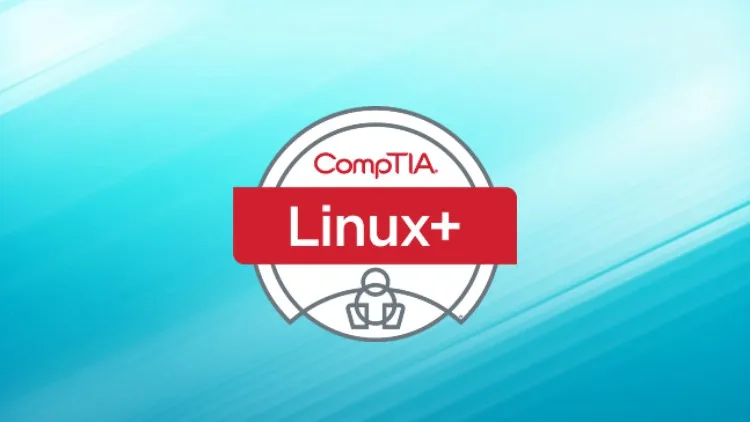The main goal of SGL’s CompTIA Linux+ training program is to build the groundwork for Linux administration expertise. It’s intended to provide you with the fundamentals of Linux administration knowledge for installation, troubleshooting, and upkeep.
Prerequisites
To guarantee your success in this course, you should have at least baseline familiarity with general systems administration processes, some hands-on exposure to one or more Linux distributions, as well as understanding of computer hardware and basic networking and cybersecurity principles.
You can enroll in the approved CompTIA courses listed below to get this level of knowledge and skill:
- Network+® (Exam N10-008) • Security+® (Exam SY0-601) • A+® Core 1 and 2 (Exams 220-1001 and 220-1002)
Objectives:
- Setting up Linux and controlling user and group accounts.
- Managing ownership and permissions in Linux.
- Overseeing network, system, and kernel services.
- Using shell scripts and the Bash shell.
- Secure and troubleshoot the Linux operating system.
Audience
Linux OS and associated technologies are covered in detail in the CompTIA Linux+ Course. Numerous IT professionals, such as, network administrators, Linux system administrators, aspiring Linux professionals, technical support staff, IoT device engineers, and systems engineers, can benefit from this CompTIA Linux+ training.
Course Outline
- Performing Basic Linux Tasks
- Identify the Linux Design Philosophy
- Enter Shell Commands
- Get Help with Linux
- Managing Users and Groups
- Assume Superuser Privileges
- Create, Modify, and Delete Users
- Create, Modify, and Delete Groups
- Query Users and Groups
- Configure Account Profiles
- Managing Permissions and Ownership
- Modify File and Directory Permissions
- Modify File and Directory Ownership
- Configure Special Permissions and Attributes
- Troubleshoot Permissions Issues
- Managing Storage
- Create Partitions
- Manage Logical Volumes
- Mount File Systems
- Manage File Systems
- Navigate the Linux Directory Structure
- Troubleshoot Storage Issues
- Managing Files and Directories
- Create and Edit Text Files
- Search for Files
- Perform Operations on Files and Directories
- Process Text Files
- Manipulate File Output
- Managing Kernel Modules
- Explore the Linux Kernel
- Install and Configure Kernel Modules
- Monitor Kernel Modules
- Managing the Linux Boot Process
- Configure Linux Boot Components
- Configure GRUB 2
- Managing System Components
- Configure Localization Options
- Configure GUIs (Graphical User Interfaces)
- Manage Services
- Troubleshoot Process Issues
- Troubleshoot CPU and Memory Issues
- Managing Devices
- Identify the Types of Linux Devices
- Configure Devices
- Monitor Devices
- Troubleshoot Hardware Issues
- Managing Networking
- Identify TCP/IP Fundamentals
- Identify Linux Server Roles
- Connect to a Network
- Configure DHCP and DNS (Domain Name System) Client Services
- Configure Cloud and Virtualization Technologies
- Troubleshoot Networking Issues
- Managing Packages and Software
- Identify Package Managers
- Manage RPM Packages with YUM
- Manage Debian Packages with APT (Advance Persistent Threat)
- Configure Repositories
- Acquire Software
- Build Software from Source Code
- Troubleshoot Software Dependency Issues
- Securing Linux Systems
- Implement Cybersecurity Best Practices
- Implement Identity and Access Management Methods
- Configure SELinux or AppArmor
- Configure Firewalls
- Back Up, Restore, and Verify Data
- Working with Bash Scripts
- Customize the Bash Shell Environment
- Identify Scripting and Programming Fundamentals
- Write and Execute a Simple Bash Script
- Incorporate Control Statements in Bash Scripts
- Automating Tasks
- Schedule Jobs
- Implement Version Control Using Git
- Identify Orchestration Concepts
- Installing Linux
- Prepare for Linux Installation
- Perform the Installation
Overview
For an IT professional looking to advance their knowledge and certification in Linux administration, this course is ideal.
You will learn all about Linux administration in this CompTIA Linux+ Training course, including how to manage user accounts, troubleshoot issues, and secure the system. Gain practical expertise with the Linux operating system to help you confidently sit for the CompTIA Linux+ certification test.
With the help of this Linux+ training course, you can advance your installation, troubleshooting, and maintenance abilities by building on your core understanding of Linux and gaining next-level administrative expertise. This course is the ideal next step in your career, regardless of whether you’re an IT pro or just trying to broaden your skill set.

